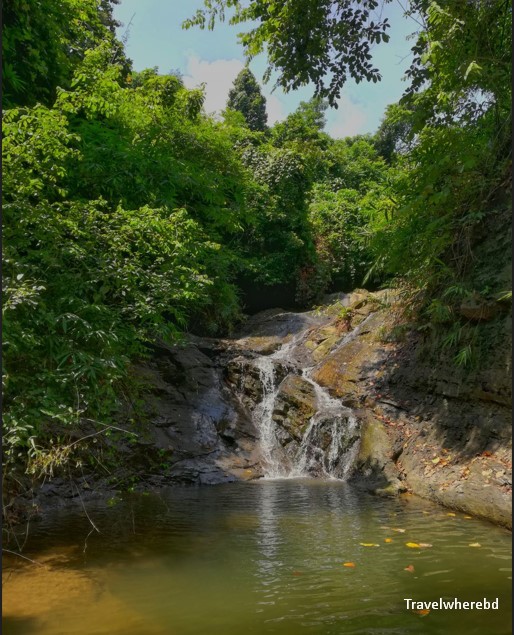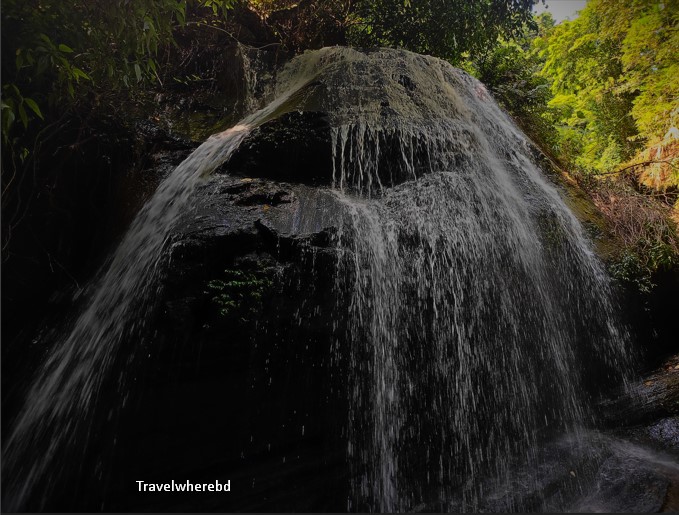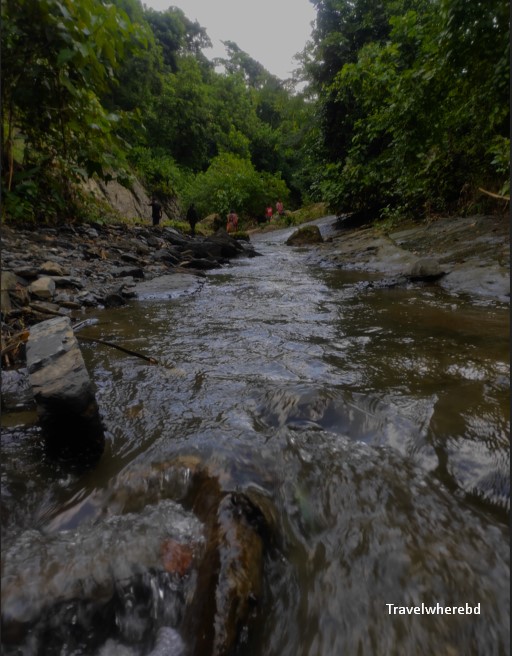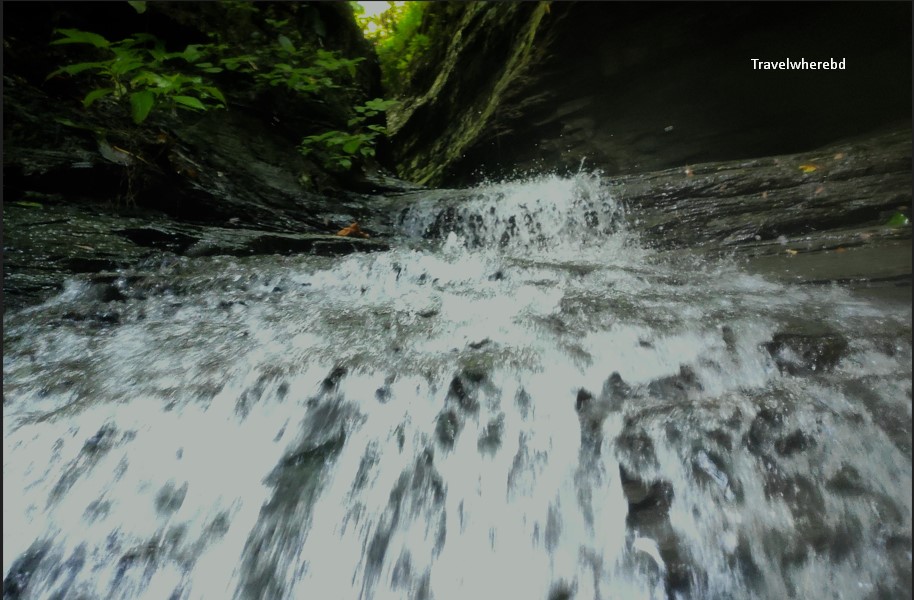Boalia Trail,Sitakunda-When & How to go!

A proverb goes that, if you don’t see the world with your eyes, this life is in vain. It is also a great privilege to witness God’s creations that are made with utmost care. Is life complete if you can’t step out of the house and enjoy life with a little courage? To taste nature this time we are going to Mirsharai in Sitakunda, the destination is the Boalia trail. For those who love extreme-level adventure, the Boalia trail can be an ideal place for them.
After trekking several trails in Sitakunda, this Boalia trail came into my mind. Even though it is not as popular as Khaiyachara and Napittchara, there is no decision to travel this trail. Being a relatively less popular trail, people do not know much about it. At first, I was a little scared because that place is always less crowded, and the trekking road is not so easy. But I can’t hold myself from seeing the wildness of the Boalia trail. Leaving aside all thoughts, we set off for Boalia Trail one night in September.

What to see in Boalia Trail:
- Shakunmara Jharna/waterfall
- Uthandhal
- Noatikhum
- Andharmanik/Kolatoli waterfall
- Palakatakhum waterfall
- Baushya waterfall
- Baushya upstream
- Andharkota waterfall
- Boalia waterfall
- Boalia upstream
Best time to visit Boalia Trail-
The best time for any trail trek is usually the rainy season because during that time there is a lot of water in the springs and the trekking route is also wonderful. But trekking on the Boalia trail is very dangerous in monsoons especially if it is raining continuously. Then it would be best if you avoided this trail.
How to go-
Route 1-
Buses of various companies reach Chittagong via Sitakunda from Dhaka’s Syedabad, Chittagong Road, Kolabagan, and Gabtali. You will get many more buses including Ena, Shyamoli, Unique, Hanif etc. The ticket cost 700 Tk.
Besides, there are also some buses like Mamun, Saint Martin Travel, Saudia, and Al Arafa. Fare 400- 450 Tk.
If the budget is low, you can get some local buses from Syedabad after 12 p.m. The fare is 300-350 taka. If you go by bus, you have to get down at Mirsharai Bazar.
Route 2-
Dhaka to Feni- Feni to Sitakunda route
You can go from Dhaka to Feni by Ena, Star Line, or Saudia bus, the fare is 350-400 taka. A lot of bus is available from Mohipal in Feni to Mirsharai Bazar. The fare is Tk 60-70.
Route 3-
If you want to journey by train, you must get off at Chittagong Station by any train that goes to Chittagong and back to Sitakunda Bajar by bus. The train ticket is 380 taka. Bus fare from Chittagong is 60-70 taka. You can also get down at Feni, then go to Mirsharai Bazar by bus. From Feni station, take CNG to the bus stand first. CNG fare per person 15 tk. From the bus stand, take a local or sitting bus to Mirsharai Bazar. Bus fare is 60-70 taka.
The Chittagong mail train is the last option for budget travelers. The fare is 110 Tk. Know details of the mail train.

How to Go Boalia Trail from Mirsharai-
When you get down to Mirsharai Bazar, you will see the “Mirsrai University College” signboard and enter the market through that road. A little further you will get a CNG/Rickshaw to go to the Boalia trail. The CNG fare is 15 Tk per person. Reserve CNG fare is 70 Tk. 5 people can go together. It will take 10 minutes to reach BRAC Poultry(the starting point of this trail).
Where to eat in Mirsharai?
There is a food hotel on the road before entering Mirsharai Bazar. You will get Bread, vegetables, dal, egg, and tea for breakfast. There is no better food hotel before the trail. There is a public toilet next to the market, 5 taka per person. You can order your lunch before entering the trail. Food Package price 100-150 Tk (per person).
Guide cost on Boalia Trail-
The guide is mainly available from the front of Brak Poultry. You will see some shops nearby. Guide charge 400-500 Tk. The charges vary according to the size of the group.
After breakfast, we took CNG and went to the starting point of the trail. We fixed the guide, bought some food, and left to see the fountain. You will get a separate room/changing room for keeping your bags, but keep the necessary things like your mobile, and wallet with you. Before entering the main trail, you have to walk along the village road for a while. You can see the crop fields which the villagers have planted with their own hands. In some places, the road has become muddy due to rain. Walking barefoot is a good option otherwise, there is a possibility of tearing the shoes. At first, you will see two routes of the trail, which is called Y junction. If you go to the right-hand side, you will find the Boalia fountain and all the other fountains on the left side. We went towards the left side, as there were more fountains in that direction. Many people go back after seeing the Boalia fountain on the right side without knowing the way.
The stream of the first fountain on the side is not visible at all. It is a very narrow place. It is normal to miss this place without a guide. After walking for 2/3 minutes we got to our first fountain, “Shokunmara Fountain”. Above the fountain, there is a canyon. This canyon is usually seen in the springs of Bandarban. It is easy to climb up the fountain. But there is no more fountain above. If you want, you can walk a little way.
The second fountain is the “Uthandhal” fountain or “Uthandhal”. This road is fantastic. If It is raining a lot, it is difficult to walk along this path. It is called Urdandhal because the water flows over a large area like a yard (Uthan in Bengali). Step carefully because the place is very slippery. You have to cross the steep slope to reach Andharmanik Spring, the highest waterfall on this trail. Before going to this waterfall there is a stone path which is strangely beautiful. Before the fountain, there is a small khum (lake), named Nyatikhum. After crossing the Khum, the fountain comes into view. Although this spring is located in a large area, there is minimal water. If it rains a lot, its true beauty may be seen. It is also called the Kolatoli waterfall because there are many banana trees on the hill. This fountain is more slippery than other fountains. In front of it is a deep khum with boulders.

After Kolatoli waterfall, next is Palakatakhum. This spring is small but beautiful. The scenery of falling water down in the entire rock is amazing. If you don’t know how to swim, it is dangerous to get down in Khum. After refreshing our body in the spring, we are going to search for the next spring. After walking for 15 minutes we found Baushya waterfall. We Climb up the waterfall that leads to the upstream of Baushya Jharna. This place is very beautiful and wild. Nature has taken care of itself. The watercolor of this khum/lake is bluish-green. The entire place is full of spider webs, we understood that no one has stepped in this spring of the trail this year.
Coming out of Baushya Jharna our next Jharna is Boalia Jharna. But on the way, the guide showed us another spring. The spring is small but the road to reach here is very dark. Without rain, we get less water in this spring. This spring has no name but we named it “Andharkota spring”. We crossed Andharkota and came to the Y junction at the very beginning of the trail, where I came across Boalia Jharna. Boalia is the biggest and most beautiful waterfall on this trail. After crossing several huge stones, I saw a khum. This place is fascinating. Water up to the nose. If there was a little more water, there would be no way without swimming. During the rainy season, you have to cross this lake by swimming. However, those who do not know how to swim can go through the nearby mountain road. After crossing Khum, I was shocked to see the fountain. What a vastness!!! what wildness! The water is flowing endlessly down from the umbrella-shaped hill. I enjoyed this vastness for a long time by sitting in front of it. You can walk through the canyon below the waterfall. The guide said that there are two more springs above this spring. It will take 15 minutes to trek those upper streams. However, it is risky to go to those springs in the on-season, so we did not go up.
How to travel at a low cost-
1) There are some buses that leave after 12:00 PM from Sayedabad, you can travel by those buses or you can go by mail train.
2) Create a group of 4-5 people, the cost will be reduced a little.
3) Bargain wherever you go.
Boalia Trail Travel Tips-
1) Take a guide if you are new to the trail.
2) Use trekking shoes with good grip. Also, carry anklets.
3) In some places you will get a lot of mud. Take off your shoes and cross the muddy areas.
4) You can wear socks to avoid jokes. Keep salt with yourself. After some time, check your body if there are any leeches.
5) No need to carry water. You can drink water from the fountain if you keep a bottle with you. But as the trail is long and difficult must keep biscuits, saline, dates, and bananas.
6) Order lunch before entering the trail. Although there are not many hotels here and the quality of food is not that good.
7) The earlier you start the trail, the sooner you can finish it.
8) After finishing the trail, you can visit Mahamaya Lake to refresh your tired body.
Precautions while traveling on Boalia Trail-
1)Boalia is the most dangerous trail in Sitakunda. It is requested not to go to the Boalia trail in case of continuous rainfall.
2) The khums/lakes are bottomless and deep. If you don’t know how to swim, avoid going into the water.
3) Boalia Trail is like a puzzle that has a beginning but no end. This trail is very narrow, and the possibility of losing the way is very high, so take a guide with you.
4) There are 2 more springs above Boalia Spring (upstream). To climb this upstream during the monsoons is to risk your death.
5) The trail is relatively slippery so step carefully and consult a guide before going upstream.
6) This trail starts from Sitakunda and extends to Khagrachari. If you take the wrong path, you may suffer later.
7) If you encounter a flash flood/harka bun while trekking, stop trekking and stay in a safe place.
8) The Kolatoli/Andharmanik fountain is very slippery compared to others, be careful.
9) Before fixing the guide, decide in advance how many fountains you will see.
10) Must leave the trail before evening. You can call this help number 999 for any assistance.
Thank you! Have a good trip.
